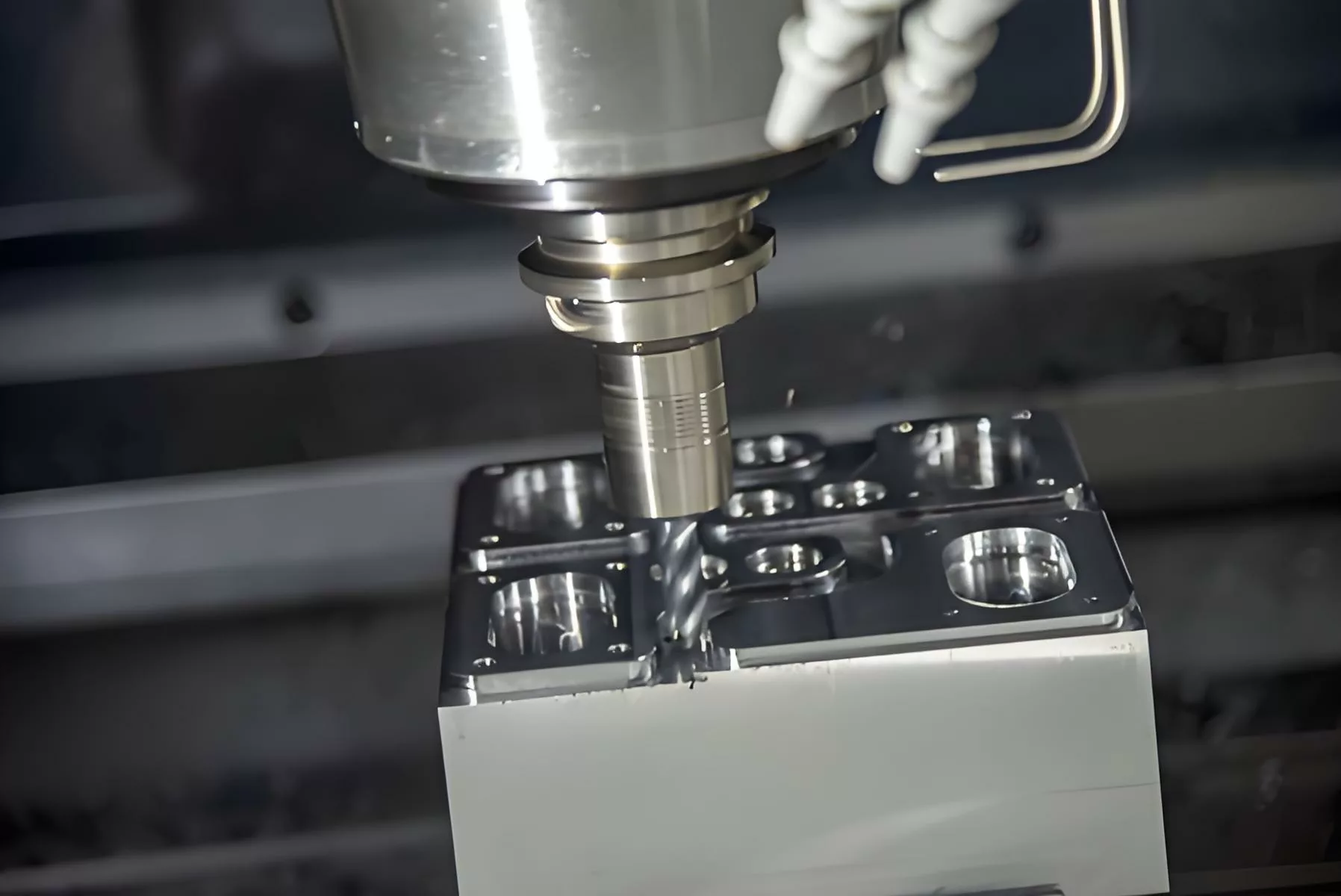During the machining process, vibration and tool chatter are common issues. These problems lead to chatter marks on the workpiece surface, as well as increased rework and scrap rates. Today, saimotools has compiled 12 methods to reduce cutting vibrations in CNC milling machines.

01 Use Sharp Inserts to Reduce Cutting Force
Indexable inserts are divided into coated and uncoated types. Uncoated inserts are usually sharper than coated ones. This is because coated inserts require edge 钝化 (Edge Rounding, ER) treatment—sharp edges would compromise the adhesion strength of the coating at the edge area.
02 Adopt Small Nose Radius When Depth of Cut is Fixed
When the depth of cut is fixed, using a small nose radius undoubtedly reduces cutting force, especially radial cutting force. Radial cutting force is the main factor causing vibration in slender tools or workpieces, whether in boring or milling. At the same depth of cut, a larger nose radius increases the tendency of vibration in slender tool shanks.
03 Avoid Depth of Cut Equal to Nose Radius (When Depth of Cut is Adjustable)
When the depth of cut is adjustable, avoid setting it equal to the nose radius.
04 Use Tools with 90° Lead Angle for Slender Tool Shanks or Slender Shafts
For boring with slender tool shanks or external turning of slender shafts, using tools with a 90° lead angle helps dampen vibrations. Whether turning a slender shaft with an external turning tool or boring a hole with a slender boring tool shank, a 90° lead angle tool always generates the smallest radial cutting force, while maximizing the axial force from the insert edge.
05 Use Round Insert Milling Cutters for Slender Shank Milling Cutters
Unlike boring tools, milling cutters with a lead angle closer to 90° produce greater radial cutting force and more severe tool shank vibration. Therefore, in CNC milling of deep cavity faces for molds, 45° lead angle milling cutters are typically used. If the depth of cut is less than 1mm, round insert milling cutters or ball nose cutters are often adopted.
06 Use Plunge Milling for Deep Cavity Milling with Slender Shank End Mills
When milling deep cavities with slender shank end mills, plunge milling is commonly used. Plunge milling involves the tool feeding axially like a drill bit. For deep cavity milling—where the tool overhang is usually more than 3 times the tool shank diameter—axial feed plunge milling is recommended. However, end mill inserts have radial cutting edges of a certain width; tool suppliers provide technical data specifying the maximum width of cut for such tools during plunge milling.
07 Improve Workpiece Clamping for Thin-Walled Workpieces
Vibration during the milling of thin-walled workpieces stems entirely from the workpiece itself. Such workpieces are often referred to as box-type or bowl-type parts. Since vibration originates from the workpiece, improving workpiece clamping is the primary solution for milling these parts.
08 Use Inserts with Small Edge Angles for Internal Boring
For internal boring, smaller insert edge angles are preferred. This design results in a large minor lead angle, minimizing the contact area between the minor cutting edge and the machined surface—making it difficult for chatter to develop into vibration. It also reduces the chance of chip extrusion by the minor cutting edge.
09 Use Coarse-Pitch, Unequally Spaced Face Mills
Using coarse-pitch, unequally spaced face mills can reduce milling vibrations. Here, "pitch" refers to the number of inserts. For face mills of the same diameter (e.g., 100mm) and identical cutting parameters, a cutter head with 5 inserts will generate 50% less milling force than one with 10 inserts.
10 Use Inserts with Positive Rake Angle, Large Clearance Angle, and Light Chip Breakers
Inserts with a positive rake angle, large clearance angle, and light chip breakers have the smallest cutting wedge angle. This ensures smooth and easy cutting, whether in turning or milling.
11 Adjust Cutting Parameters
Adjusting cutting parameters may only be effective for minor cutting vibrations. The general adjustment methods are as follows:
- Reduce the rotational speed of the tool or workpiece.
- Decrease the depth of cut and increase the feed rate per revolution (for turning) or per tooth (for milling).
- For internal thread turning, if vibration occurs, reduce the number of finishing passes by 1–2.
12 Arrange Tool Paths Reasonably
Reasonable tool path arrangement is crucial for milling. Milling is divided into climb milling and conventional milling. Traditional milling theory states that conventional milling helps reduce vibration, but this mainly refers to suppressing vibration caused by lead screw backlash. Modern milling equipment is mostly equipped with ball screws or roller screws, so conventional milling no longer has significant vibration-damping benefits. Whether using climb milling or conventional milling, vibration of plate-type parts can be reduced if the direction of the milling force aligns with the workpiece clamping direction.


